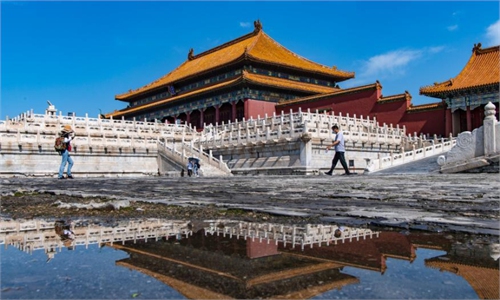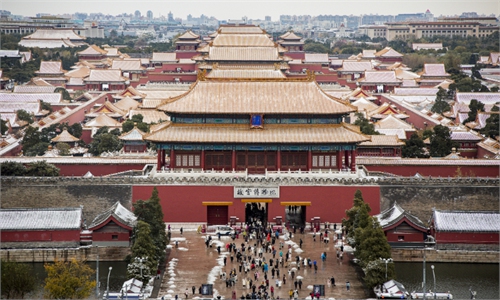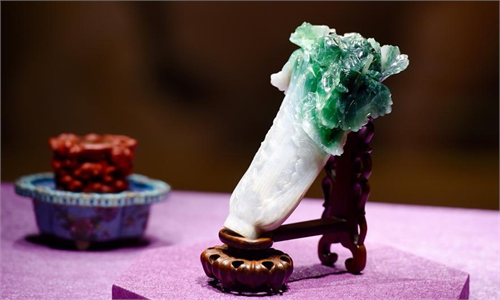IN-DEPTH / IN-DEPTH
From Mogao Grottoes to Forbidden City, renowned cultural heritage guardian witnesses China marching through a confident cultural path
Preserving history
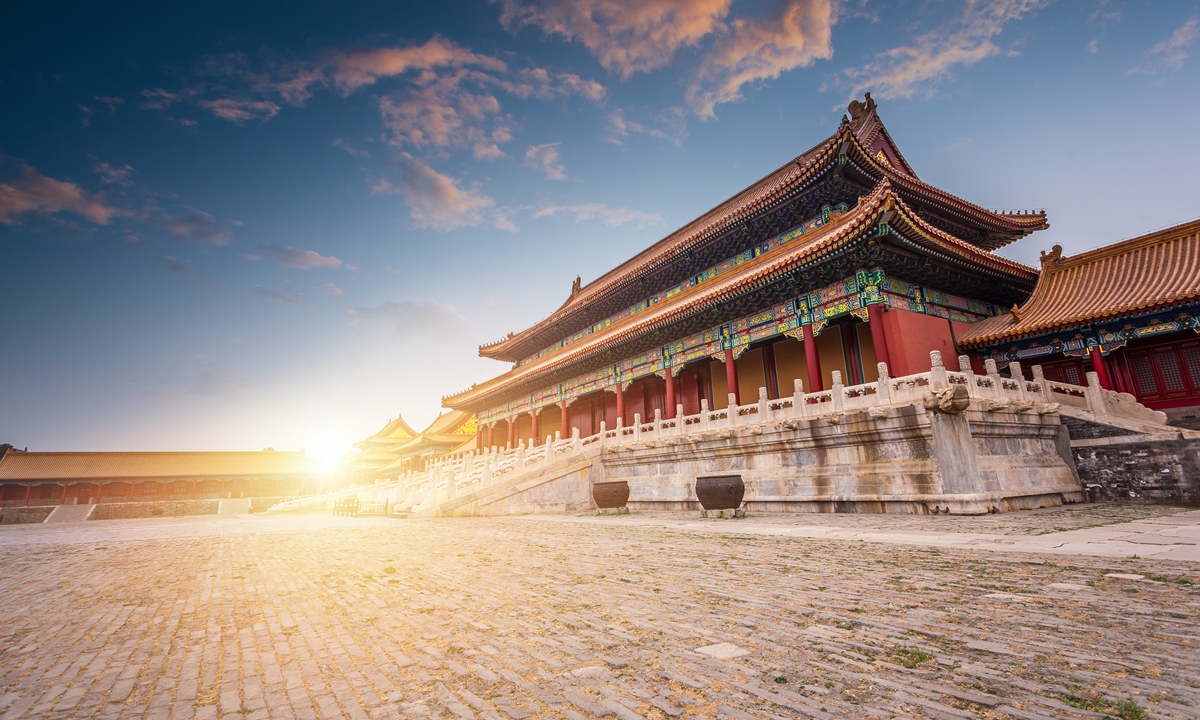
A view of the Forbidden City in Beijing. Photo: VCG
Editor's Note:
Who is the Communist Party of China (CPC)? What is the CPC's role in the new era?
The CPC has grown into one of the largest parties in the world in the process of leading the Chinese people in seeking liberation and happiness, making China as strong and prosperous as it is today.
As the CPC ushers the nation into a new era of development, the last decade has witnessed great achievements in national strength and prosperity, with people's confidence and recognition of this path rising to unprecedentedly high levels.
With more than 96 million members, the CPC concluded its 20th National Congress in October, which realized the goals of unifying thinking, fortifying confidence, charting the course for a new era, and boosting morale. The Global Times is publishing a series of stories to help the world understand the CPC in this new era, through stories from CPC members working on the frontlines of various fields, as well as through observations made by respected scholars.
In this installment, a renowned cultural heritage gatekeeper shares his experience and observations in the preservation and promotion of China's outstanding traditional culture.
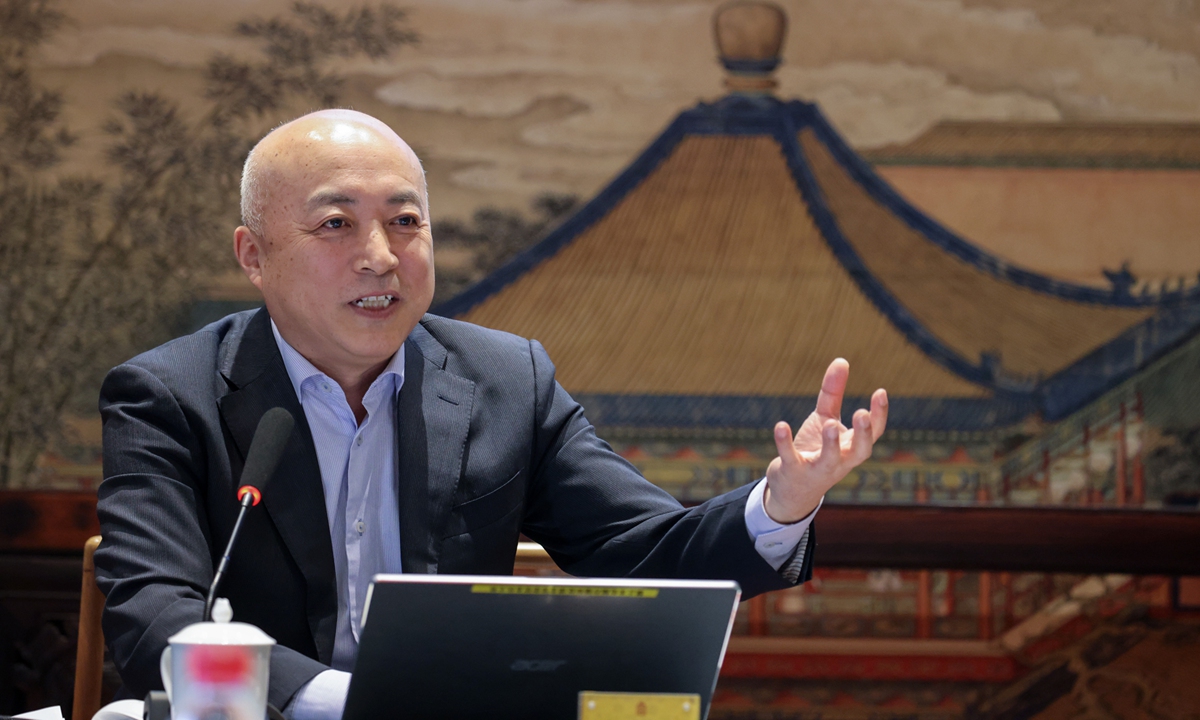
Wang Xudong Photo: VCG
Along with the notice of Beijing city resuming its inter-provincial group tour, photos of the Forbidden City, one of the capital's brightest "namecards," have flooded the Chinese internet, once again sparking the passion of tourists and cultural enthusiasts across the country.
Wang Xudong, director of the Palace Museum, has hope and tranquility in his heart, and this is the summary of his journey over three decades of devoting himself to cultural heritage conservation.
In April 2019, Wang, then 52, became the seventh director of the Palace Museum after 28 years of working at the Mogao Grottoes in Northwest China's Gansu Province.
In the process serving and managing the two distinctive world cultural heritage sites, Wang insists on protecting the splendid historical and cultural treasures with scientific and standardized means. He has promoted exchanges and dialogue among scholars at home and abroad; he has also continuously promoted the research and interpretation of cultural heritage, telling the wonderful stories behind cultural relics.
From a difficult start to a flourishing development, Wang has witnessed China's confident strides through a self-strengthening, inclusive cultural path. His career is intertwined with the forward movement of China's heritage conservation, research, and promotion.
Road for heritage conservation
From the Mogao Grottoes to the Forbidden City, Wang is confronted by two different states of conservation of world cultural heritage. "Although there are differences in the specific heritage conservation practices, the principles of conservation are the same, and the huge difference was in fact of the attitude of Chinese society toward cultural relics," Wang told the Global Times in an exclusive interview.
Wang will never forget the thrilling "accident" he experienced at a fresco restoration site in Yulin Caves in Gansu Province in 1993, just two years after he started working.
At that time, Wang and his colleagues were overconfident about the results of their research of a fresco grouting material in the laboratory. "However, when it came to operating at site, the repaired wall immediately bulged. Fortunately, the remedy was timely, but I could not imagine what would have happened had a piece of the mural really fallen off. It is not renewable," Wang said.
That adventure forever fastened Wang's heartstrings around his work. "I always tell myself to be in awe of cultural relics," He said.
Wang pointed out that since the 18th CPC National Congress, the Party has attached unprecedented importance to the protection and promotion of cultural relics.
"At present, the requirements of the country for the high-quality conservation of cultural relics and the ardent expectations of the public urge us to continue to develop and renew ourselves," Wang said.
In recent years, Wang noted that China's cultural preservation concept has evolved from the initial salvage protection-oriented plan, to the same emphasis on salvage and preventive protection, with both focusing on cultural relics and the surrounding environment's protection.
In his report to the 20th CPC National Congress, Xi Jinping fully recognized the major achievements made in cultural undertakings in the new era, and proposed to "put more effort into protecting cultural artifacts and heritage, better protect and preserve historical and cultural heritage."
As a delegate to the 20th CPC National Congress, Wang was present to witness this milestone event, and was asked by the congress to give an interview to the media on the delegate channel. He introduced the work of the Palace Museum in protecting, studying, and interpreting cultural heritage in recent years, which has been positively affirmed by the Chinese people.
"We must be at the forefront, leading the development of technical norms and management concepts of cultural relic protection, explaining, excavating, and spreading the value of the Forbidden City and more Chinese cultural heritage sites, so that more people can know about it and cherish it," Wang said.
'Share different stories with each other'
In his three years at the head of the Palace Museum, Wang has visited almost all of the Forbidden City's more than 9,000 rooms and met more than 1,400 staff members in the museum's 40 departments.
As the director of a museum with a collection of more than 1.86 million objects, Wang has a very busy schedule, in which Wang said his most relaxed moment was talking with experts, scholars and staff from different departments about their happiness and difficulties in their work.
As a Party member, Wang cherishes the mission given by the CPC and does his best to play a unifying and leading role in his post.
Wang noted that an important goal for him now is to further stimulate the technical and managerial advantages of the museum's talent, while integrating the strengths of the whole community and even overseas knowledgeable people to make new breakthroughs for the Palace Museum's development in heritage conservation, academic research, open services, and talent training.
"Only through listening to people, respecting their differences, and finding mutual consensus, can we open new perspectives for the development of the Palace Museum and truly deepen exchanges and mutual learning among different civilizations," he emphasized.
Wang pointed out that the Forbidden City is also a typical representative of the inclusiveness of Chinese culture. "The Forbidden City was founded 602 years ago, but it embodies 5,000 years of the Chinese civilization by showcasing various ethnic groups and schools of thought," he said.
In recent years, the Palace Museum has further deepened its exchanges with the cultural circles of other countries through cooperative exhibitions, forums, and personnel exchanges.
Wang revealed that the Palace Museum has finalized the list of scholars who will initiate exchanges with overseas countries and regions in 2023. He expects that more scholars from other countries will come to the Palace Museum to find the cultural elements of their own country and nation. He also hopes that Chinese scholars will venture forth with excellent Chinese traditional culture for learning and exchange.
Meanwhile, exhibitions that the Palace Museum had planned with countries including Austria, Italy, and France, as well as Afghanistan, Iran, and Pakistan, but which were postponed due to the global pandemic, will also be put on the 2023 schedule, Wang noted.
The museum is also planning to introduce more cultural relics from countries along the Belt and Road Initiative (BRI) for exhibition, he added.
"We should not just stand in the Forbidden City to see the world, but stand in the world to see the Forbidden City," Wang said, "We look forward to placing ourselves on the historical scale of the development of the entire human civilization to look at ourselves, after opening our hearts and minds, to firmly shouldering the historical mission of fully protect and responsibly carry forward the fine traditional Chinese culture carried by the Forbidden City," Wang said.
Make cultural relics come alive
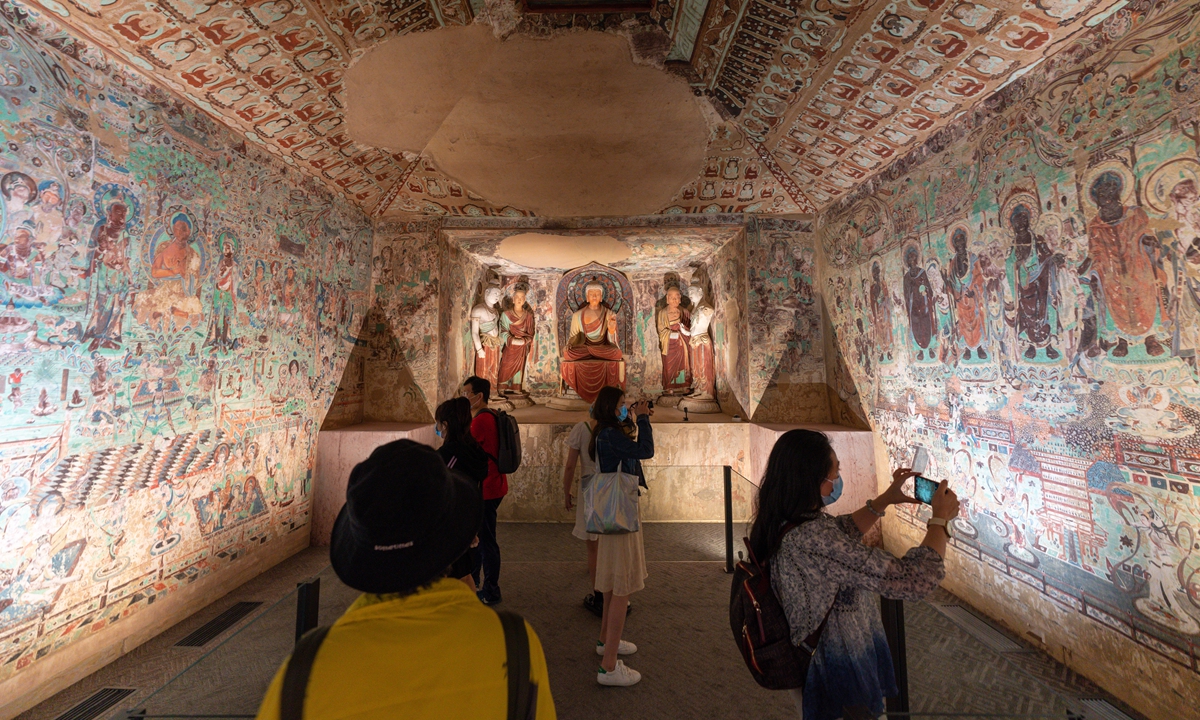
Visitors at the "Beyond the Bounds of History," a collaborative exhibition between the Palace Museum and Dunhuang Academy at the Forbidden City in Beijing on September 23, 2021. Photo: IC
At present, the Forbidden City and Mogao Grottoes continue to attract Chinese and even foreign visitors.
Wang believes that the public's affection for museum of cultural relics stems not only from the growing demand of the Chinese people for high-quality intellectual and cultural products, but also from the continuous improvement of the education level of museum exhibitions and the awareness of management and service in the country.
Wang noted that both the Palace Museum and the Dunhuang Academy shoulder the mission of promoting the creative transformation of fine traditional Chinese culture. "We should always be awake and vigilant. Cultural creativity is not to copy the classical elements. Exhibitions, educational activities, network publicity, variety shows, and literary works are the ways in which the Palace Museum turns heritage resources, and research results into popular cultural forms," he said.
Wang pointed out that the Palace Museum has been making efforts to express modern traditional culture through scientific and technological means. "So far, the Palace Museum has completed the digital image collection of more than 800,000 cultural relics, with more than 1 million still to be collected. Now we are digitizing artifacts at a rate of 75,000 a year," he said.
In 2023, Wang said the Palace Museum will continue to improve the construction of a digital platform for the dissemination of Chinese culture, while actively looking for the combination of traditional culture and modern life, to meet the growing intellectual and cultural needs of the people, and further stimulate the vitality of fine traditional Chinese culture.
Yu Di contributed to this story
